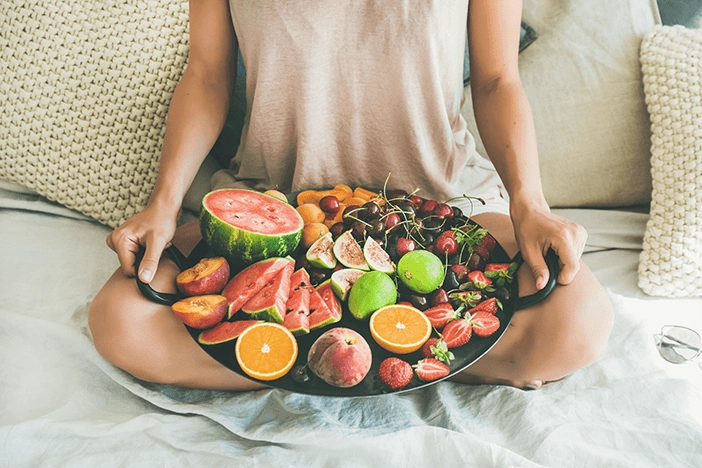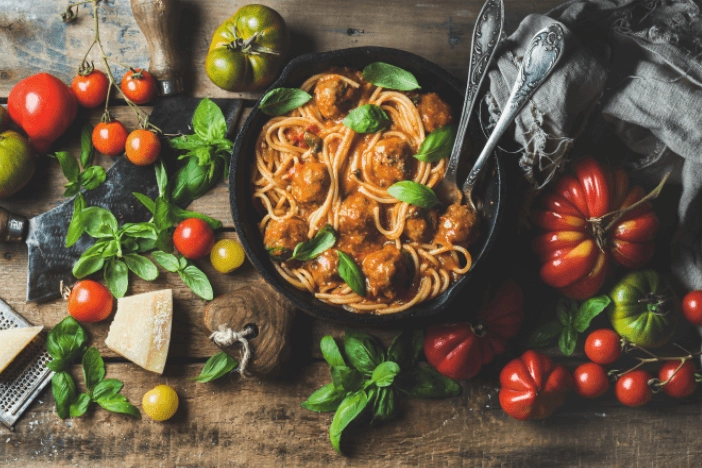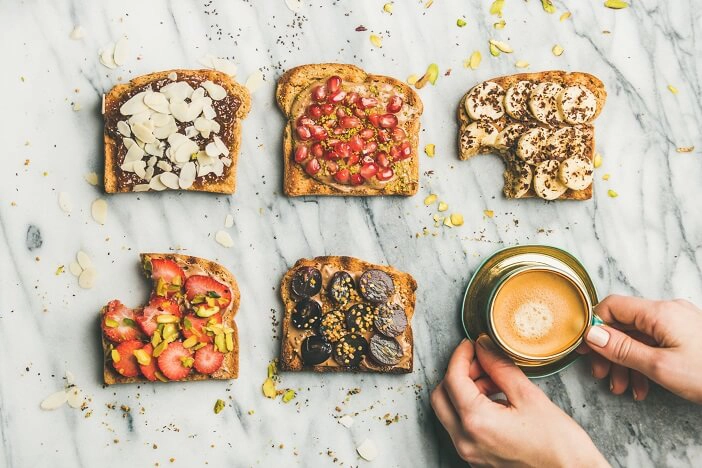- Review – Quiz
- Why is it important to correctly estimate portions and portion sizes?
- How important are portion sizes when losing weight?
- How many meals should I eat a day? What do I have to pay attention to when it comes to portions if I eat several or fewer meals a day?
- How to control your portion size – hand method, plate sizes and MyPlate method
- When can you use which method?
- Portion information on packaging – what you should pay attention to
- Conclusion: Portions and portion sizes
- The Essentials (brief)
- 5 simple things you can implement
- Your Homework
1. Review - Quiz
Heavy bones, baby fat or simply a healthy appetite – are these the reasons for your excess weight!
Consciously controlling portions and portion sizes is an essential part of a healthy diet.
In this lesson you will learn:
- Why the correct estimation of portions is important,
- the role of portion sizes in losing weight,
- how many meals a day are ideal – and practical tips for implementation,
- Know the food pyramid – and how you can effectively integrate it into your daily menu,
- the hand method and other control options to help you develop a better understanding of portion sizes and integrate a healthy diet into your everyday life.
2. Why is it important to correctly estimate portions and portion sizes?
The importance of proper serving goes far beyond calorie control. Good portion control not only allows weight to be regulated, but also ensures a balanced nutrient intake. Portions that are too large may result in excessive calorie intake, while portions that are too small may not meet the body’s nutrient needs. A conscious approach to portions not only promotes a healthy weight, but also an optimal supply of essential nutrients.
The right portion helps you get the right amount of calories and nutrients.
3. How important are portion sizes when losing weight?
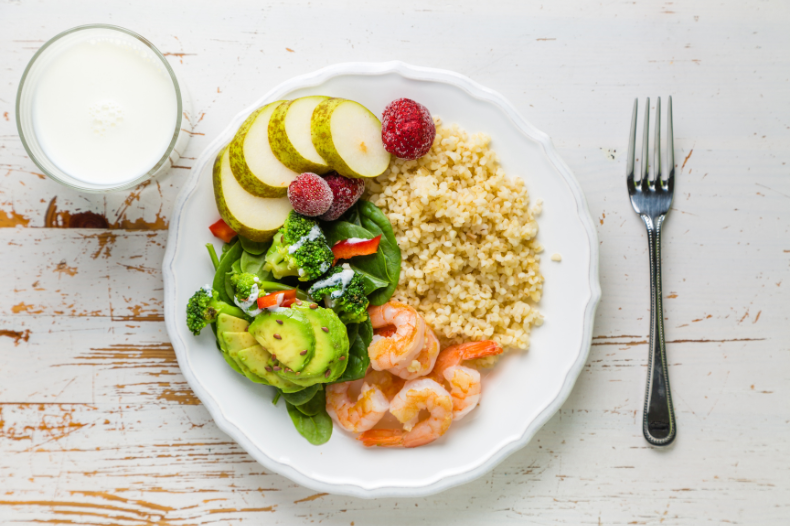
When it comes to losing weight, controlling portion sizes plays a crucial role. Consuming fewer calories is a key element in losing weight. Proper portion control can help you create and maintain an effective calorie deficit. Smaller portions are often a first (and easy) step to losing weight and maintaining a sustainable, healthy diet.
Studies have shown that portion sizes are often misjudged afterwards. So take a look before you eat so that you choose the right portion. You can see exactly how this works below!
Smaller portions ensure lower calorie intake, making weight loss quick and easy.
4. How many meals should I eat a day? What do I have to pay attention to when it comes to portions if I eat several or fewer meals a day?
The number of meals per day you should eat is not fixed. It’s very individual: Some people can’t eat well/a lot in the morning, for others the day only really starts with a hearty breakfast. Others may not be hungry in the evening, but others may be even more so. The answer to the question “How many meals should I eat a day?” depends on individual preferences and lifestyle.
Regardless, it is crucial that portion sizes are adjusted accordingly. If you eat several meals a day, portions should be smaller to ensure a consistent supply of energy. If you eat fewer meals, portions should be larger to meet nutritional needs. A balanced distribution of protein, carbohydrates, fats, fruit and vegetables remains essential.
The ideal portion varies depending on the meal and your individual needs. Here are some recommendations for you:
- Breakfast: 1/4 to 1/3 of your daily calorie intake
- Lunch: 1/3 to 1/2 of your daily calorie intake
- Dinner: 1/4 to 1/3 of your daily calorie intake
If you eat more often, you should choose smaller portions. If you eat less often, you can eat larger meals.
5. How to control your portion size - hand method, plate sizes and MyPlate method
Controlling portion sizes can be done in various ways. The hand method offers a practical option without having to use scales or measuring cups. Plate sizes can also influence how much you eat, with smaller plates automatically encouraging smaller portions. Dividing the plate according to fixed categories such as vegetables, protein and carbohydrates supports a balanced diet (MyPlate method).
5.1 The hand method: Guidelines for portion sizes and per food group
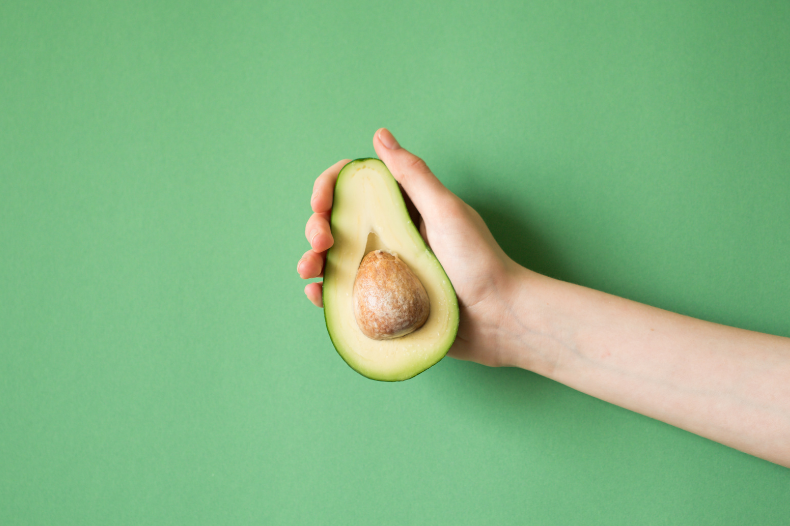
The hand method is an easy-to-use technique for estimating portion sizes. You simply use your hand to estimate the correct portion sizes. You can use the following guidelines as a guide:
5.2 Plate sizes and their effect on your portion

The size of our eating utensils can have a significant impact on how much we eat. Research has shown that people tend to consume larger portions when served on larger plates. The reason for this lies in the optical illusion – on a large plate, even moderate portions appear rather modest, while the same amount on a smaller plate appears generous.
So if you want to consciously control your portion sizes, choosing smaller plates can be a simple and effective strategy. Placing your meals on a smaller plate automatically reduces the quantity without making you feel restricted. This simple trick can help you maintain a balanced diet without sacrificing enjoyment.
Pay attention to how your plate size affects your perception of portions and experiment if necessary to find what size works best for you. It’s a subtle but powerful way to shift your eating habits in a positive direction.
5.3 How much of which food groups should you consume per meal/meal type? The MyPlate method
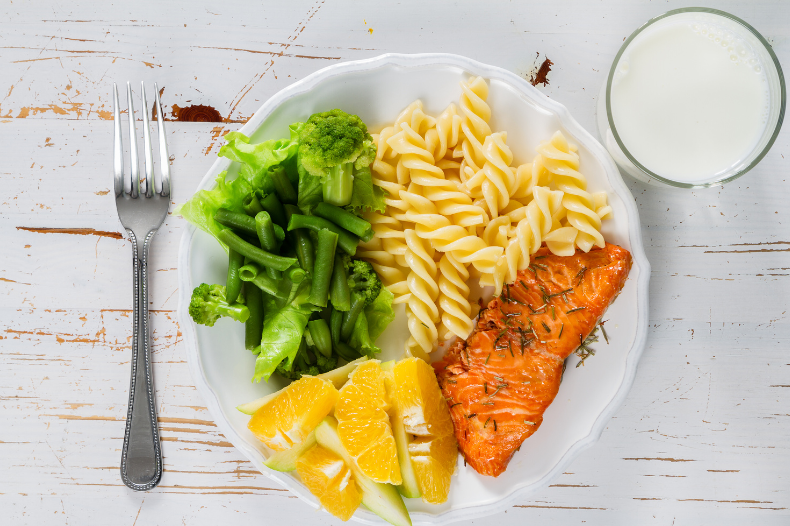
Portion sizes depend on individual needs, activity level and personal goals. However, the MyPlate method offers a simple guideline:
- Fill 1/2 of the plate with vegetables and fruit
- Cover 1/4 with lean protein (meat, fish, legumes).
- Cover 1/4 with whole grain products (rice, quinoa, whole grain bread).
- Add a small portion of healthy fat (avocado, nuts).
The MyPlate method allows for a balanced intake of nutrients during meals.
6. When can you use and apply each method?
- The hand method is ideal for on the go or in restaurants when scales are not available. This way you can estimate how balanced a meal is.
- Plate sizes can be used at home to automatically encourage smaller portions.
- Sharing your plate is especially helpful if you tend to overload meals with excessively large portions of individual food groups.
The choice of method depends on the situation and personal preferences.
7. Portion information on packaging – what you should pay attention to
- Read the portion information on food packaging carefully. Note that the actual amount you consume may differ from the serving size listed on the packaging.
- Particularly small portion sizes are often indicated on packaging in order to make the nutritional information appear better.
- Compare serving sizes on different products to make informed decisions.
Conclusion: Portions and Portion Sizes
Conscious control of portions and portion sizes plays a crucial role in a healthy and balanced diet. By using methods such as the hand method, sharing plates, and following the food pyramid, you can contribute to your well-being and long-term health. It’s not just about measuring calories, it’s about building a sustainable and healthy relationship with food. With these practical tips, you can take control of your portions and incorporate a balanced diet into your everyday life.
The essentials (brief)
- Conscious control of portions and portion sizes is crucial for a healthy diet and weight management.
- Proper portion distribution not only allows for calorie control, but also a balanced nutrient intake
- Portions that are too large may result in excessive calorie intake, while portions that are too small may not meet the body´s nutrient needs.
- Portion size control plays a crucial role in weight loss as it helps to create and maintain an effective calorie deficit.
- The number of meals per day depends on the individual, but portion sizes should be adjusted accordingly to ensure a balanced energy intake.
- The food pyramid and the 6-5-4-3-2-1 principle offer practical guidelines for a balanced diet.
- The hand method, plate sizes and the MyPlate method are effective approaches to controlling portion sizes.
- Choosing smaller plates can help you automatically consume smaller portions.
5 simple things you can implement
- Use the hand method at home: Use your hand to estimate portion sizes. For example, a portion of meat is the size of your palm. This makes checking easier without having to use scales or measuring cups.
- Choose smaller plates: Consciously use smaller plates to influence the visual perception of portions. On smaller plates, moderate portions appear more generous, which can help you eat less.
- Focus on vegetables and proteins: Fill half of your plate with vegetables and a quarter with lean proteins (meat, fish, legumes). This promotes a balanced diet and helps you feel fuller for longer.
- Drink water before meals: Drink a glass of water before meals to promote satiety. Sometimes thirst is misinterpreted as hunger, which can lead to overeating.
- Pay attention to portion sizes in restaurants: If you eat out, share large portions with someone else or have some of the meal packed. Order appetizers or half portions.
Your Homework
Keep a checklist this week:
- Write down what you eat.
- Whenever your meals follow the MyPlate method, you put a check mark next to the meal.
- Note when you tend to choose larger or smaller portions.
At the end of the week you will see how often you have eaten according to the MyPlate method and get an overview of your eating habits.


